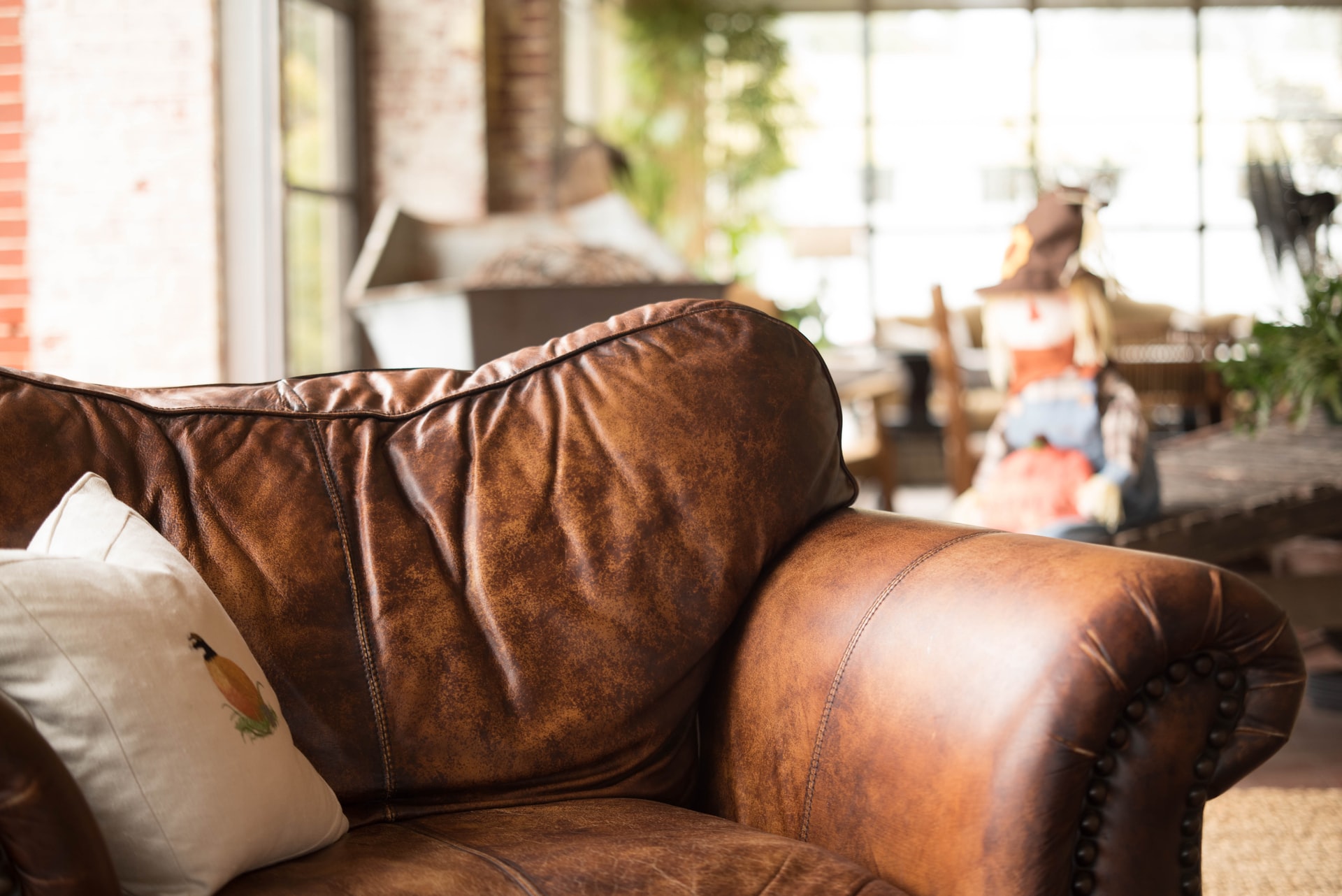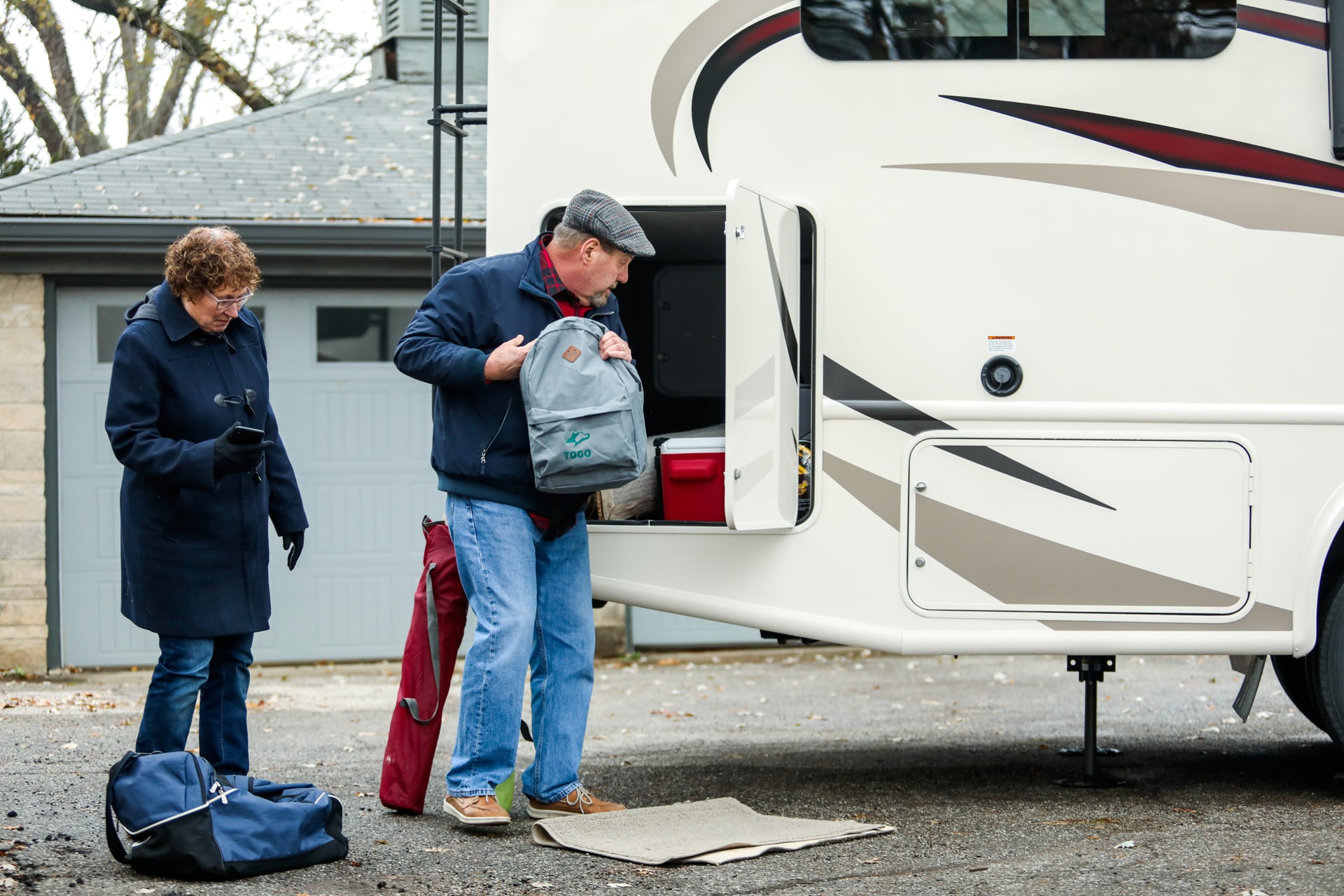Understanding How to Care for Leather Furniture

Regular Care
Do NOT use saddle soap or mink oil! Also, the leather used in cars is generally a different grade and uses a different type of dye than leather used in upholstery. You cannot necessarily use the same leather products on both your car and your sofa. You will find some people who insist that saddle soap or mink oil is the best way to clean and/or condition your leather, regardless of what type of leather you have. However, oil-based cleaners will stretch the leather near the seams, changing the color and pulling the leather away from the stitching. Upholstery leather should be cleaned with a water-based cleaner to avoid stretching and changing the color of the leather.
You should dust leather furniture once a month. Use a soft cloth damp with warm water to lightly rub any areas frequently used - pay particular attention to head and arm rests. You also need to use a leather conditioner on the furniture every two to three months. Most leather workers will recommend Leatherique® or Lexol-pH®. These are both high-quality cleaner/conditioners that should work on either aniline dyed leather or pigmented leather. Lexol-pH® is a newer product that you will want to test on an unobtrusive area before applying to the whole piece to make sure it's fully compatible with your leather upholstery.
Leather does acquire a patina as it ages. This is a natural process and not a defect in the workmanship of your leather furniture. This changing patina of leather is the charm of the material and what makes it such a valuable type of upholstery - it won't stay exactly the same as it ages; it ages with you. So, even if you clean and condition it regularly, you will eventually notice that the color changes as the piece ages - this is normal!
Removing a Stain
Eventually, something will probably fall on your leather furniture and create a mark - but don't despair! You can usually remove or minimize the stain just by blotting with water.
Often water-based liquids don't really stain the leather - particularly not with the quality of dyes in use today. Just blot up as much of the liquid as possible - don't rub at it. Keep blotting until the paper towel or cloth comes back completely dry and then let the leather air dry.
If that doesn't work, try some leather cleaner.
Ballpoint ink and newspapers both have some aniline in the ink formula. Unfortunately, this means that these inks tend to actually dye leather. If you find a stain like this, contact a leather professional.
If you have a butter or grease stain, do not use water! Again, blot at the spill until the towel or rag comes back dry. Many leather workers recommend allowing the stain to "cure" over a day or so before re-evaluating it. Often the oil will re-settle in the leather and not be noticeable.
If it is still visible, try some leather cleaner like Lexol® or Leatherique®. If that fails, contact a leather technician to see about a professional cleaning or repair - and remember that if you had a fabric sofa the results would be much worse!
Looking for more flexible, convenient and safe transportation for your household goods at affordable prices? Visit Dumpster Wagon.
Professional Packing Tips

When you're packing for a move, you might want to ask yourself if you should pack it yourself or hire a professional to do it for you. In many of our moves we've never used professionals to pack our things; for me it's always about saving money. Others I know swear by packing professionals, claiming they're worth every penny. And I believe it! But if you're like me and you just can't afford the price-tag, use these tips from the professionals to make sure your stuff arrives at your new home without cracks, scrapes or permanent damage.
What Should Be Packed?
If you have specialty items or items that are worth a lot of money, it might be worth it to hire professionals to pack them properly. Chandeliers, large glass pieces (sculptures, oversized mirrors and glass top tables), and some fine antique furnishings that may just need to be properly padded. Major appliances also require special care.
Packing Supplies
All About Boxes. A question I get asked a lot is, whether to buy new boxes or to ask the local grocer for some, both of which have their pros and cons. I'm a big supporter of recycling, so we usually try to use boxes that have been slightly used. For special items or antiques, I keep a few heavy-duty small boxes on hand. My husband, who supports going to every wine store in the city to collect used liquor boxes, finds that the boxes he collects are rarely damaged, since their former contents didn't carry anything spill-able (except very well-corked wine), and are perfect for packing books. And I agree. They're small, compact so it's almost impossible to over-pack them.
My suggestion is to do what is best for your things and for your budget. We're currently in the middle of a move; I had to move early to the new city to start a job, leaving my family back at our old home with all the packing. Needless to say, my husband collected his boxes from local stores and has managed to pack the entire house (except for specialty items like a large mirror) with used boxes. Not only did it save on our moving budget, but I also feel better that I'm moving a little greener by reusing boxes.
Other Packing Necessities
Again, in this last move, my husband took my advice and used shredded paper to fill boxes, to cushion delicate items and to keep things from moving around during transport.
That's one way to save some money and trees. However, you still may need to buy more packing supplies such as:
Packing or Sealing Tape
• Packing Paper
• Bubble Wrap and Anti-static Bubble Wrap
• Labels
• Marker
• Specialty Boxes
Make Sure You Label Boxes
When I started to unpack the boxes my husband pre-shipped, I was impressed with how he'd labeled the boxes. Although he wasn't as detailed as I would be, he at least had the room locations correct and some of the contents listed.
Even though it seems to take so much time to label, proper labeling will save you a lot of time at the new house. I can't tell you the amount of hours I've spent looking through packed boxes for a recipe book or just recently, a photo album I'd promised my mother-in-law.
Most professional packing services recommend that you create a full list of everything that's been packed in the box, adding as many details as possible.
So, what should you include?
1. Name: I usually just put our last name.
2. Room: Whether it's the kitchen, dining room, child's bedroom, etc...
3. Contents: This is important especially if it's a mixed box, meaning that you've included several kinds of items. For instance, if you put some of the spices, a few cookbooks and a small appliance in a box, mark that it contains all three. You can also be more specific by keeping similar spices together (spices for cooking: basil, thyme, rosemary, vs. spices for baking: cinnamon, cloves, ginger), cookbooks you use often and an appliance you also use regularly.
4. I'd include in some boxes, a detailed list of what's inside, especially if the contents are important. My husband recommends making a spreadsheet, and using a numbering system, you can then match the spreadsheet item to the box number.
This is a lot of work if you're under a tight timeline. The best advice is to try to think of how you'll be unpacking, what's important to you and how you can best ease the unpacking on the other end.
5. Fragile, This End Up or Heavy: Make sure you properly label the box so that the movers know what to expect and how to handle the box. If the item is fragile, mark it or if it's a heavy box, then make sure you note that on the outside. This will help protect your goods and the people who are moving them.
At Dumpster Wagon, they are designed to work with your schedule and offer flexible delivery options for your remodeling needs, home clean out, and disposing of your construction debris.